Explore the Timeless Majesty of Karnak Temple: Your Ultimate Guide to Egypt’s Ancient Wonder
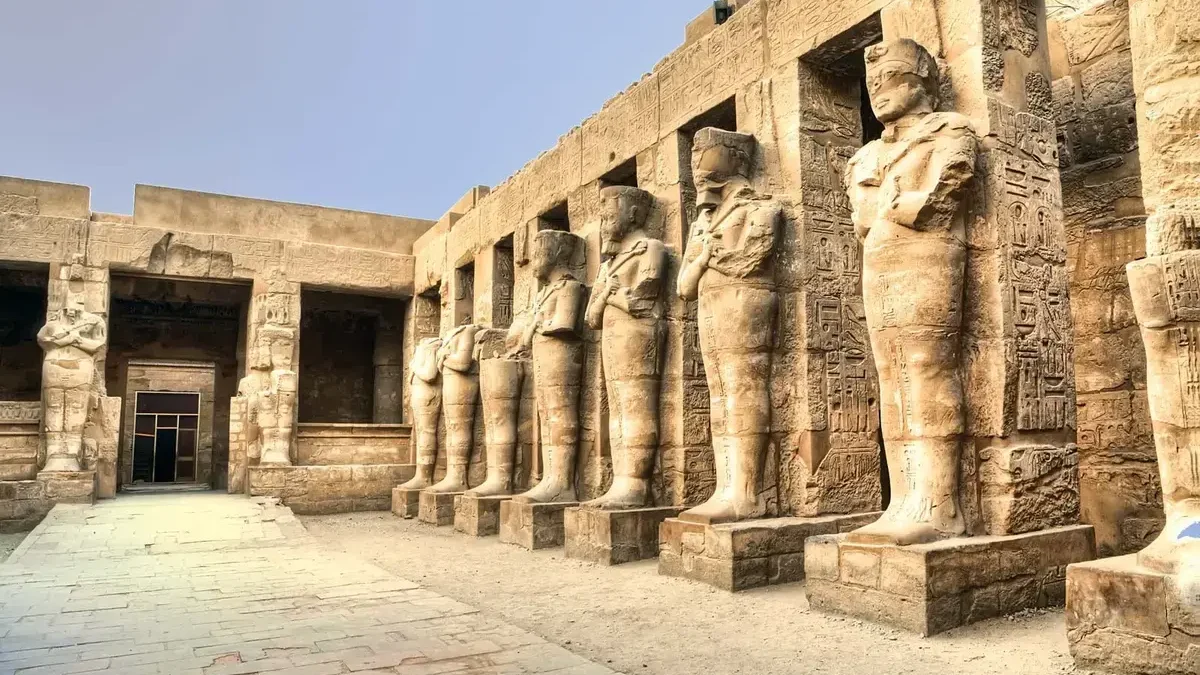
Explore the Timeless Majesty of Karnak Temple: Your Ultimate Guide to Egypt’s Ancient Wonder
Welcome to Karnak Temple, one of the most magnificent and historically significant sites in Egypt. As a testament to ancient Egyptian ingenuity and devotion, Karnak Temple stands as a monumental complex that has captivated visitors for millennia. This comprehensive guide provides everything you need to know for an enriching visit to Karnak Temple, including its history, key attractions, unique features, and practical information for tourists.

A Glimpse into the History of Karnak Temple
Early Beginnings
Karnak Temple, located in modern-day Luxor, Egypt, is one of the largest religious complexes in the world. Its construction began around 2000 BCE during the Middle Kingdom and continued through the Ptolemaic period.
- Middle Kingdom: The initial construction of Karnak Temple began under the reign of Senusret I, one of the early pharaohs of the Middle Kingdom. The temple was dedicated to Amun-Ra, the chief deity of Thebes.
- New Kingdom Expansion: The temple complex saw significant expansion during the New Kingdom, particularly under the rule of pharaohs such as Hatshepsut, Thutmose III, and Ramses II.
Religious Significance
Karnak Temple was the center of religious worship for over 2,000 years and played a pivotal role in ancient Egyptian religion and culture.
- Amun-Ra: The temple was primarily dedicated to Amun-Ra, the king of the gods, but also honored other deities such as Mut (Amun-Ra’s consort) and Khonsu (the moon god).
- Opet Festival: The annual Opet Festival was one of the most important religious events held at Karnak, where statues of the gods were paraded from Karnak to Luxor Temple.
Modern Discoveries
Modern archaeological efforts have continued to reveal the grandeur and complexity of Karnak Temple.
- Napoleon’s Expedition: The first detailed studies of Karnak Temple were conducted during Napoleon’s Egyptian Campaign in the late 18th century.
- Ongoing Excavations: Archaeologists continue to uncover new aspects of the temple, providing deeper insights into its construction, use, and cultural significance.
Key Attractions of Karnak Temple
The Great Hypostyle Hall
The Great Hypostyle Hall is one of the most awe-inspiring features of Karnak Temple, covering an area of 50,000 square feet with 134 massive columns.
- Columns: The hall is filled with towering columns, some reaching heights of 69 feet, intricately carved with hieroglyphs and reliefs depicting pharaohs and gods.
- Roof Beams: The enormous roof beams, though many have fallen, give a sense of the grandeur and scale of the original structure.
- Light and Shadow: The interplay of light and shadow within the hall creates a dramatic and ethereal atmosphere, highlighting the architectural brilliance of the ancient Egyptians.
The Sacred Lake
The Sacred Lake at Karnak Temple was used for ritual purification and other religious ceremonies.
- Rituals: Priests would use the lake to cleanse themselves before performing rituals and entering the temple.
- Scenic Views: The lake provides a serene backdrop for the temple, reflecting its monumental structures and enhancing its mystical ambiance.
The Avenue of Sphinxes
The Avenue of Sphinxes is a grand walkway lined with sphinx statues that once connected Karnak Temple to Luxor Temple.
- Statues: The sphinxes, with bodies of lions and heads of rams or humans, symbolize protection and strength.
- Processions: The avenue was used during religious processions, particularly during the Opet Festival, where statues of deities were transported between the temples.
The Obelisks
Karnak Temple is home to several obelisks, towering stone pillars that were erected to honor the gods and commemorate the achievements of pharaohs.
- Hatshepsut’s Obelisk: One of the tallest obelisks at Karnak, it stands at 97 feet and is inscribed with praises to Amun-Ra and Hatshepsut’s accomplishments.
- Thutmose I’s Obelisk: Another significant obelisk, it reaches a height of 75 feet and celebrates the reign of Thutmose I.
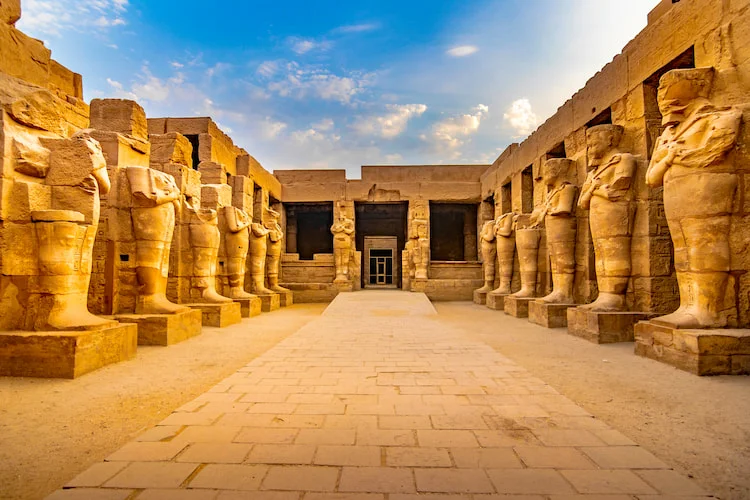
Unique Features of Karnak Temple
Architectural Marvels
Karnak Temple is renowned for its architectural innovations and grandeur.
- Pylon Gates: The temple complex is marked by massive pylon gates, each decorated with reliefs and inscriptions that tell stories of military victories and divine favor.
- Hypostyle Halls: The hypostyle halls, with their forest of columns, demonstrate the Egyptians’ mastery of large-scale construction and design.
- Sanctuaries: The sanctuaries within the temple complex were considered the holiest areas, where only priests and pharaohs could enter to commune with the gods.
Artistic Mastery
The artistic achievements at Karnak Temple reflect the skills and creativity of ancient Egyptian artisans.
- Reliefs and Inscriptions: The walls, columns, and obelisks are covered with intricate reliefs and inscriptions that depict scenes from mythology, royal ceremonies, and daily life.
- Statues: The temple complex is adorned with numerous statues of gods, pharaohs, and mythical creatures, each meticulously crafted to convey power and divinity.
- Coloration: Traces of original paint on the carvings and reliefs provide a glimpse into the vibrant colors that once adorned the temple, adding to its splendor.
Religious and Cultural Significance
Karnak Temple played a central role in the religious and cultural life of ancient Egypt.
- Amun-Ra’s Sanctuary: The sanctuary of Amun-Ra was the focal point of the temple, where offerings and prayers were made to gain the god’s favor.
- Festival Halls: The festival halls were used for grand ceremonies and celebrations, reflecting the importance of religious festivals in Egyptian society.
- Symbolism: The architectural layout and decorations of the temple are rich in symbolism, representing the creation myths and cosmology of ancient Egypt.
Practical Information for Tourists
Getting There
Karnak Temple is located in Luxor, Egypt, and is easily accessible by various modes of transportation.
- By Air: The nearest airport is Luxor International Airport (LXR), which offers flights from major cities in Egypt and international destinations.
- By Train: Luxor is well-connected by train to Cairo and other major Egyptian cities, offering a scenic journey along the Nile.
- By Road: Luxor can also be reached by bus or private car, with well-maintained roads connecting it to other parts of Egypt.
Opening Hours and Tickets
Karnak Temple is open to visitors year-round, with specific hours depending on the season.
- Opening Hours: The temple is typically open from 6:00 AM to 5:00 PM in the winter and from 6:00 AM to 6:00 PM in the summer. It is advisable to check the official website or local information for the most up-to-date hours.
- Tickets: Tickets can be purchased at the entrance. It is recommended to buy tickets in advance, especially during peak tourist seasons.
Accessibility
Karnak Temple is committed to providing a welcoming and accessible experience for all visitors.
- Wheelchair Access: While some areas of the temple have uneven terrain, many parts are accessible to visitors with mobility issues.
- Guided Tours: The temple offers guided tours led by knowledgeable guides who provide in-depth information about the history, architecture, and significance of the complex.
Tips for an Enjoyable Visit
Plan Your Visit
To make the most of your time at Karnak Temple, it’s helpful to plan ahead and prioritize the attractions and activities that interest you the most.
- Early Arrival: Arrive early to avoid the crowds and enjoy the temple in the soft morning light, which is ideal for photography.
- Guided Tours: Consider joining a guided tour to gain deeper insights into the history and significance of Karnak Temple and its numerous features.
Capture the Moment
Karnak Temple offers numerous opportunities for stunning photographs. Here are some tips to capture the best shots:
- The Great Hypostyle Hall: The Great Hypostyle Hall, with its towering columns and intricate carvings, is a must-photograph location.
- The Obelisks: Capture the grandeur of the obelisks, particularly Hatshepsut’s Obelisk, with its impressive height and detailed inscriptions.
- The Sacred Lake: The Sacred Lake provides a serene and reflective backdrop for photos of the temple’s structures.
Must-See Highlights at Karnak Temple
The Great Hypostyle Hall
The Great Hypostyle Hall is one of the most awe-inspiring features of Karnak Temple, covering an area of 50,000 square feet with 134 massive columns.
- Columns: The hall is filled with towering columns, some reaching heights of 69 feet, intricately carved with hieroglyphs and reliefs depicting pharaohs and gods.
- Roof Beams: The enormous roof beams, though many have fallen, give a sense of the grandeur and scale of the original structure.
- Light and Shadow: The interplay of light and shadow within the hall creates a dramatic and ethereal atmosphere, highlighting the architectural brilliance of the ancient Egyptians.
The Sacred Lake
The Sacred Lake at Karnak Temple was used for ritual purification and other religious ceremonies.
- Rituals: Priests would use the lake to cleanse themselves before performing rituals and entering the temple.
- Scenic Views: The lake provides a serene backdrop for the temple, reflecting its monumental structures and enhancing its mystical ambiance.
The Avenue of Sphinxes
The Avenue of Sphinxes is a grand walkway lined with
sphinx statues that once connected Karnak Temple to Luxor Temple.
- Statues: The sphinxes, with bodies of lions and heads of rams or humans, symbolize protection and strength.
- Processions: The avenue was used during religious processions, particularly during the Opet Festival, where statues of deities were transported between the temples.
The Obelisks
Karnak Temple is home to several obelisks, towering stone pillars that were erected to honor the gods and commemorate the achievements of pharaohs.
- Hatshepsut’s Obelisk: One of the tallest obelisks at Karnak, it stands at 97 feet and is inscribed with praises to Amun-Ra and Hatshepsut’s accomplishments.
- Thutmose I’s Obelisk: Another significant obelisk, it reaches a height of 75 feet and celebrates the reign of Thutmose I.
Dining and Shopping at Karnak Temple
Dining Options
While there are no dining facilities within Karnak Temple itself, there are several cafes and restaurants nearby where you can enjoy a meal or a snack.
- Luxor Cafes: Nearby Luxor offers a variety of dining options, from casual cafes to fine dining restaurants, serving both local Egyptian cuisine and international dishes.
- Picnic Areas: Consider bringing a packed lunch to enjoy in one of the designated picnic areas near the temple, taking in the views of the ancient structures.
Souvenir Shops
The area around Karnak Temple features several souvenir shops where you can purchase unique gifts and mementos of your visit.
- Local Crafts: Look for handmade crafts, jewelry, and artwork created by local artisans, reflecting the rich cultural heritage of Egypt.
- Books and Prints: Discover a range of books and prints related to ancient Egyptian history, art, and architecture, providing a deeper understanding of the temple and its significance.
Practical Tips for Visitors
Best Time to Visit
The best time to visit Karnak Temple is during the cooler months of the year, from October to April, when the weather is more comfortable for exploring.
- Early Morning: Arrive early in the morning to avoid the heat and crowds, and to capture the temple in the soft, golden light of dawn.
- Late Afternoon: Another great time to visit is late in the afternoon, when the light is also favorable for photography and the temperature begins to cool.
Guided Tours and Audio Guides
To enhance your visit, consider joining a guided tour or renting an audio guide.
- Guided Tours: The temple offers guided tours led by knowledgeable guides who provide in-depth information about the history, architecture, and significance of the complex.
- Audio Guides: Audio guides are available in multiple languages and provide detailed commentary on the key features and highlights of Karnak Temple.
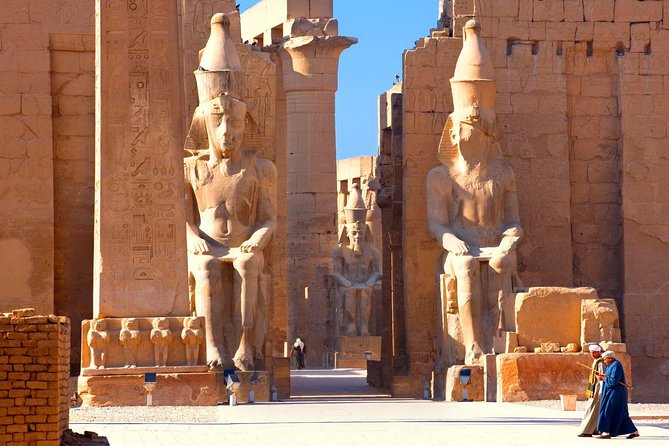
Conclusion
Karnak Temple stands as a testament to the grandeur and ingenuity of ancient Egyptian civilization, offering visitors an unparalleled journey through the history and culture of one of the world’s most fascinating ancient societies. From the awe-inspiring Great Hypostyle Hall and the serene Sacred Lake to the majestic Avenue of Sphinxes and the towering obelisks, Karnak Temple provides an unforgettable experience for all who visit. Plan your trip to Karnak Temple and immerse yourself in the beauty, history, and mystique of this ancient wonder. Embrace the opportunity to explore, discover, and create lasting memories in this iconic symbol of Egypt’s rich heritage.

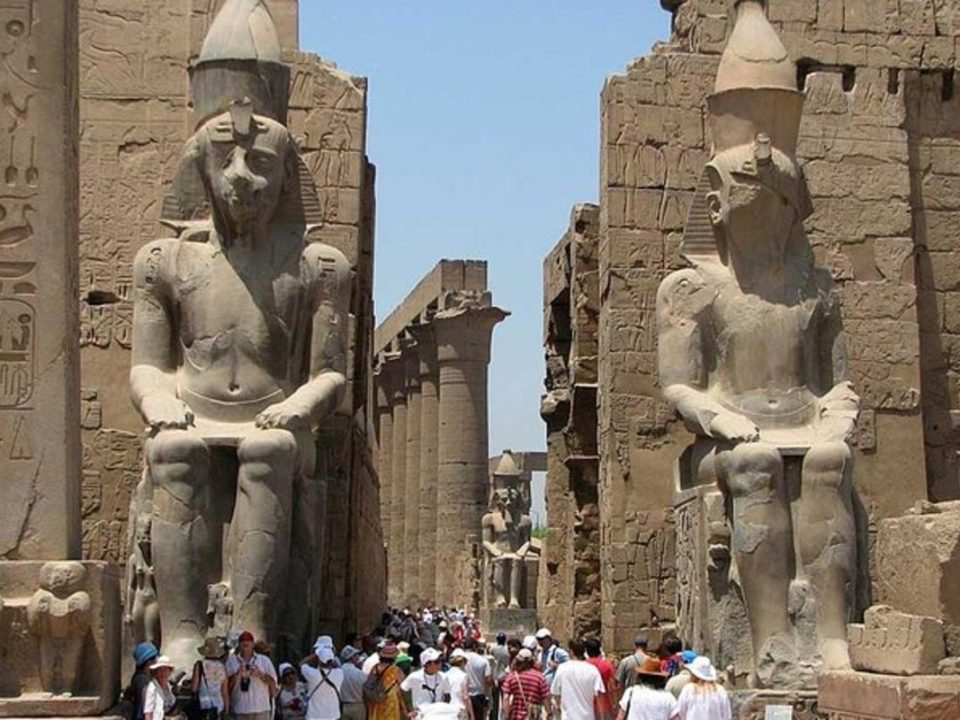
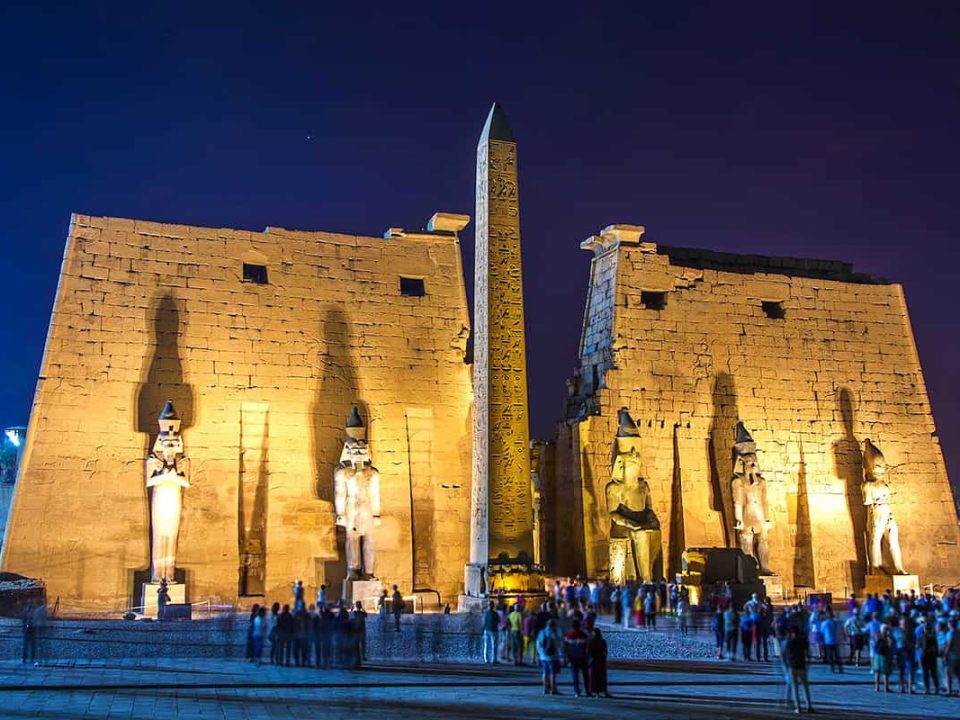

1 Comment
Muchas gracias. ?Como puedo iniciar sesion?